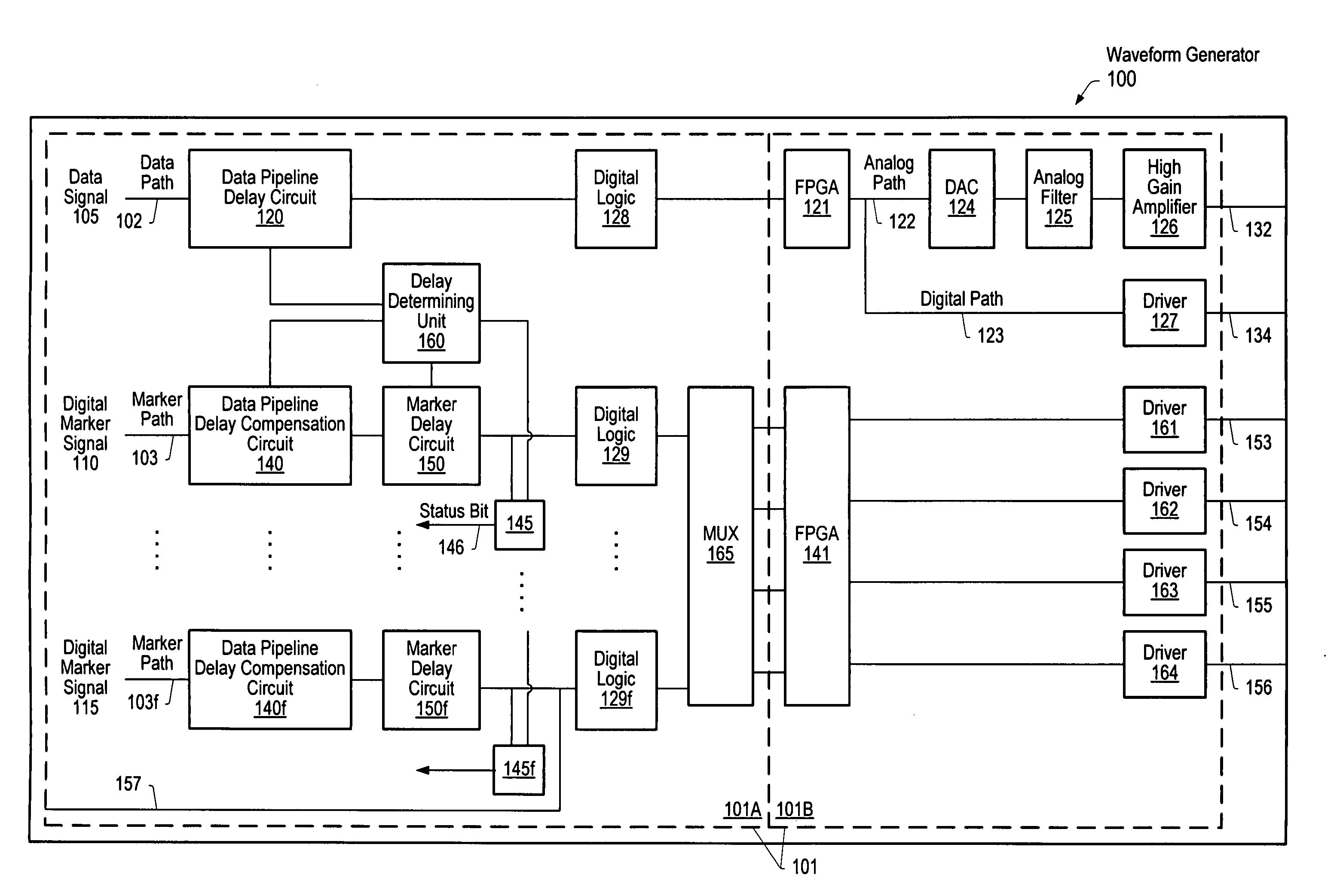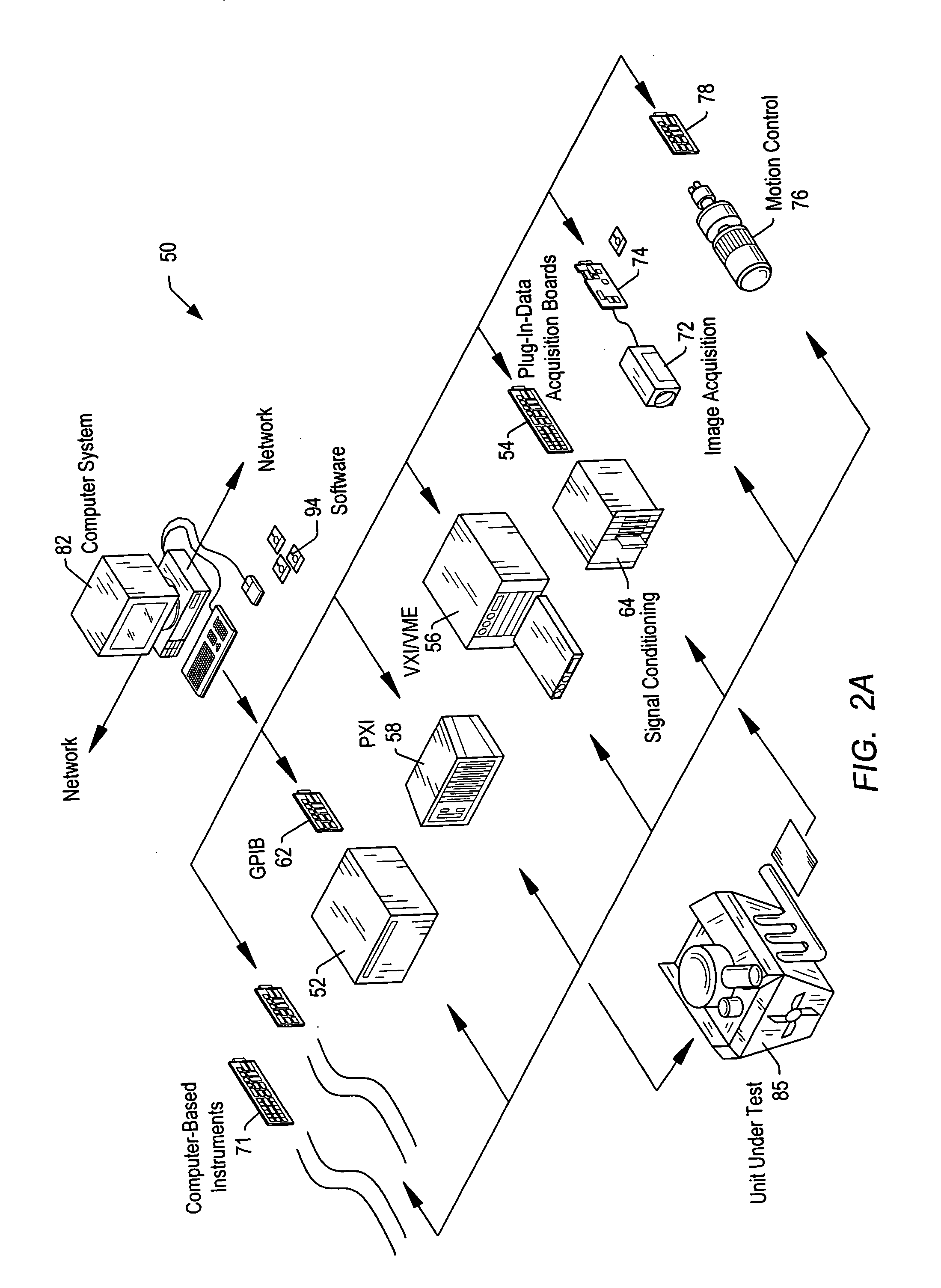Automatic delays for alignment of signals
a technology of automatic delay and alignment, applied in the field of signal generation, can solve the problems of inconvenience for users, difficulty in aligning digital marker signals with data signals in practice, and analog signals may be delayed in time with respect to the output of digital markers, so as to reduce relative delays
- Summary
- Abstract
- Description
- Claims
- Application Information
AI Technical Summary
Benefits of technology
Problems solved by technology
Method used
Image
Examples
Embodiment Construction
Aligning Signals from Multiple Sources
[0040]FIG. 1A illustrates a block diagram of one embodiment of a waveform generator 10 for generating a plurality of signals. In one embodiment, waveform generator 10 may be a standalone waveform generator or a computer-based waveform generator. Furthermore, waveform generator 10 may be an arbitrary waveform generator or digital waveform generator (i.e., logic signal source). In one embodiment, waveform generator 10 may be configured to align signals from multiple sources.
[0041] In one embodiment, waveform generator 10 may be operable to delay output of a first signal 11 provided by a first source 3 with respect to output of a second signal 12 provided by a second source 5. In one embodiment, waveform generator 10 may comprise a delay determining unit that may be operable to determine a relative delay between the first signal 11 and the second signal 12, based upon a travel path via source 3 of the first signal 11 and a travel path via source...
PUM
 Login to View More
Login to View More Abstract
Description
Claims
Application Information
 Login to View More
Login to View More - R&D
- Intellectual Property
- Life Sciences
- Materials
- Tech Scout
- Unparalleled Data Quality
- Higher Quality Content
- 60% Fewer Hallucinations
Browse by: Latest US Patents, China's latest patents, Technical Efficacy Thesaurus, Application Domain, Technology Topic, Popular Technical Reports.
© 2025 PatSnap. All rights reserved.Legal|Privacy policy|Modern Slavery Act Transparency Statement|Sitemap|About US| Contact US: help@patsnap.com



